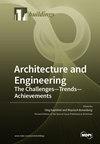State-of-the-Art Review: Effects of Using Cool Building Cladding Materials on Roofs
IF 3.1
3区 工程技术
Q2 CONSTRUCTION & BUILDING TECHNOLOGY
引用次数: 0
Abstract
Cool roofs are roofing systems designed to reflect significant solar radiation, reducing heat absorption and subsequent cooling energy demands in buildings. This paper provides a comprehensive review of cool roof technologies, covering performance standards, material options, energy-saving potential, and hygrothermal considerations. The review examines provisions in current codes and standards, which specify minimum requirements for solar reflectance, thermal emittance, and solar reflectance index (SRI) values. These criteria often vary based on factors like roof slope, climate zone, and building type. Different cool roof materials are explored, including reflective paints and coatings that can be applied to existing roofs as cost-effective solutions. Several studies have demonstrated the energy performance benefits of cool roofs, showing significant reductions in cooling loads, indoor air temperatures, peak cooling demand, and overall cooling energy consumption compared to traditional roofs. However, hygrothermal performance must be evaluated, especially in cold climates, to optimize insulation levels and avoid moisture accumulation risks, as reduced heat absorption can alter moisture migration patterns within the building envelope. While cool roofs provide substantial energy savings in hot climates, further research is needed to validate modeling approaches against real-world studies, investigate the impact of seasonality and green spaces on cool roof efficacy and urban heat island mitigation, and explore energy-saving potential, moisture control, and condensation risks in cold and humid environments.最新技术回顾:使用冷建筑覆层材料对屋顶的影响
凉爽屋顶是一种屋顶系统,旨在反射大量太阳辐射,减少建筑物的吸热和随之而来的冷却能源需求。本文全面回顾了凉爽屋顶技术,包括性能标准、材料选择、节能潜力和湿热考虑因素。本文研究了现行规范和标准中对太阳反射率、热辐射率和太阳反射率指数 (SRI) 值的最低要求。这些标准通常根据屋顶坡度、气候区和建筑类型等因素而有所不同。我们探讨了不同的凉爽屋顶材料,包括可应用于现有屋顶的反射涂料和涂层,这些都是具有成本效益的解决方案。多项研究已经证明了凉爽屋顶在能源性能方面的优势,与传统屋顶相比,凉爽屋顶可显著降低制冷负荷、室内空气温度、高峰制冷需求和总体制冷能耗。然而,必须对湿热性能进行评估,尤其是在寒冷的气候条件下,以优化隔热水平并避免湿气积聚的风险,因为吸热减少会改变建筑围护结构内的湿气迁移模式。虽然凉爽屋顶在炎热的气候条件下可以节省大量能源,但仍需进一步研究,以根据实际情况验证建模方法,调查季节性和绿地对凉爽屋顶功效和城市热岛缓解的影响,并探索寒冷潮湿环境下的节能潜力、湿度控制和冷凝风险。
本文章由计算机程序翻译,如有差异,请以英文原文为准。
求助全文
约1分钟内获得全文
求助全文
来源期刊

Buildings
Multiple-
CiteScore
3.40
自引率
26.30%
发文量
1883
审稿时长
11 weeks
期刊介绍:
BUILDINGS content is primarily staff-written and submitted information is evaluated by the editors for its value to the audience. Such information may be used in articles with appropriate attribution to the source. The editorial staff considers information on the following topics: -Issues directed at building owners and facility managers in North America -Issues relevant to existing buildings, including retrofits, maintenance and modernization -Solution-based content, such as tips and tricks -New construction but only with an eye to issues involving maintenance and operation We generally do not review the following topics because these are not relevant to our readers: -Information on the residential market with the exception of multifamily buildings -International news unrelated to the North American market -Real estate market updates or construction updates
 求助内容:
求助内容: 应助结果提醒方式:
应助结果提醒方式:


